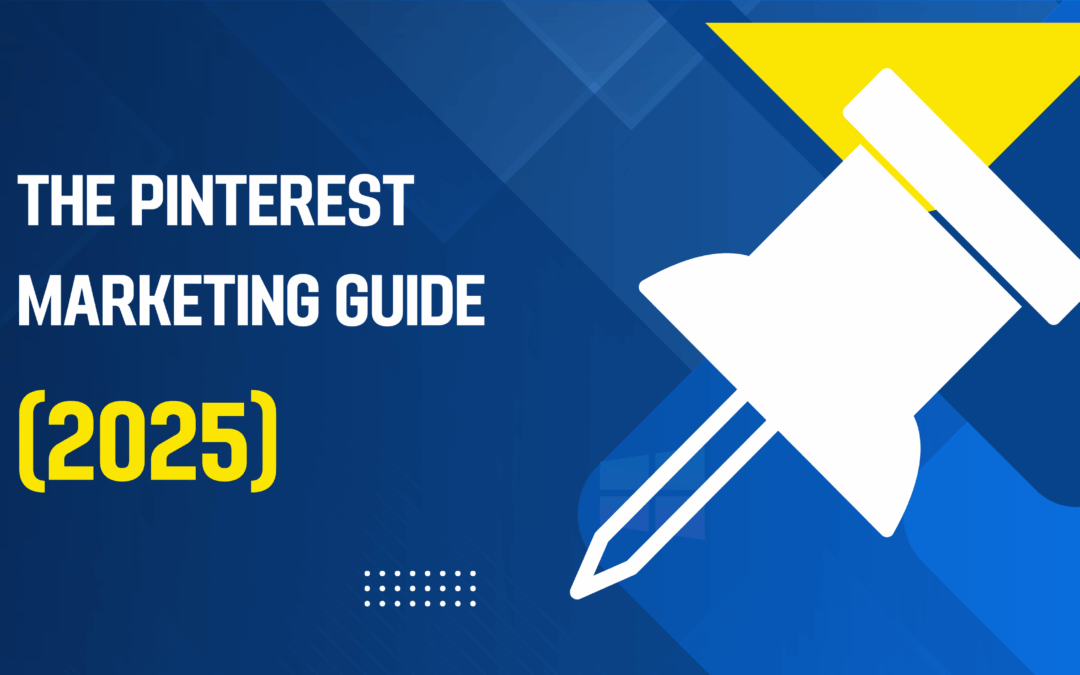Why Pinterest? (It’s Not Social Media)
Forget what you think you know. Pinterest is not another social media platform. It’s a visual discovery engine where over 450 million users actively search for ideas, plan projects, and dream about their future. This fundamental shift in perspective is the key to unlocking its immense marketing potential.
Unlike platforms where users scroll through past updates, people on Pinterest are in a high-intent, future-oriented mindset. They’re searching for things like “small balcony garden ideas,” “sustainable workout clothes,” or “easy keto dinner recipes.” This makes them exceptionally qualified leads, already considering a purchase or an action.
Key Advantages of Pinterest Marketing:
- Long-Term Traffic: A single pin can continue to generate clicks and saves for months or even years, acting as a perpetual traffic engine.
- High Commercial Intent: Users are actively planning purchases, making them valuable targets for e-commerce and service-based businesses.
- Powerful Demographics: While popular with women, it’s the fastest-growing demographic for men. It boasts a highly engaged user base across Millennials and Gen X.
Part 1: Laying the Foundation for Pinterest Success
Step 1: Set Up & Optimize Your Pinterest Business Account
If you’re serious, a free Business Account is non-negotiable. It unlocks analytics, ads, and critical features.
Profile Optimization Checklist:
- Profile Picture: Use your recognizable logo.
- Bio: Write a keyword-rich description. Don’t just say “We sell jewelry.” Say “Sustainable handmade jewelry & personalized name necklaces. Discover your next favorite piece.” (Keywords: sustainable jewelry, handmade jewelry, name necklaces).
- Claim Your Website: This verifies your profile, unlocks analytics for your website traffic, and enables Rich Pins.
Step 2: Master Pinterest SEO: It’s a Search Engine!
This is the most critical skill. Pinterest runs on keywords.
How to Find Winning Keywords:
- Use the Search Bar: Type a broad term related to your niche (e.g., “home office”). See what auto-populates. These are popular, real-time searches.
- Analyze “Related Ideas”: After a search, scroll down. Pinterest suggests other related queries. This is a goldmine for content ideas.
- Use Pinterest Trends: The free Pinterest Trends tool shows you what’s trending globally. See if your niche topics are rising.
Example: A home decor blogger might find “Japandi bedroom ideas” is trending. They can create a pin optimized specifically for that term.
Part 2: The Anatomy of a High-Performing Pin
Creating a pin that stops the scroll and earns a click is both an art and a science.
Visual Best Practices:
- Aspect Ratio: Vertical (2:3 ratio) is ideal. For example, 1000px x 1500px. Tall pins take up more screen real estate.
- High Quality & Bright: Images must be clear, high-resolution, and well-lit.
- Compelling Text Overlay: Most top-performing pins use text. Tell users what they’ll get.
- Example: A recipe pin should say “5-Ingredient Lemon Pasta Recipe (Ready in 15 mins!).”
- Branding: Subtly include your logo or website URL in a corner for brand recognition.
The Copywriting Formula:
Your description is your sales pitch. Use this template:
[Engaging Hook + Keyword]. [Describe the value/benefit]. [Clear Call-to-Action]. [Relevant Hashtags].
Example for a Fitness Brand:
“15-Minute No-Equipment Home Workout (#Keyword: home workout). Burn fat and build strength with this simple routine, perfect for beginners. Click to watch the full video tutorial on our blog! #noworkoutequipment #beginnerworkout #hiit”
Pro Tip: Enable Rich Pins. For e-commerce, this shows real-time prices and stock. For bloggers, it shows a compelling headline and description directly from your website. (This requires adding meta tags to your site, often handled via a plugin like Yoast or by a developer).
Part 3: Strategic Pinning & Content Planning
Your Board Strategy:
Organize your pins into thematic, keyword-optimized boards.
- Create Specific Boards: Instead of “Food,” create “Vegan Dessert Recipes” or “30-Minute Family Meals.”
- Create a “Best of [Your Brand]” Board: Feature your most popular products or content here.
Your Pinning Schedule:
- Be Consistent, Not Spammy: Pinning 5-10 high-quality pins per day is better than pinning 50 at once and going silent for a week.
- Use a Scheduler: Try using a scheduler like Tailwind, Pinterest’s official partner. It helps you plan posts weeks ahead, recommends the best times to publish, and gives you powerful insights through detailed analytics.
- The 80/20 Rule: A good approach is to keep around 80% of your pins focused on your own original content and mix in about 20% from trusted external sources. This way, you come across as a valuable go-to resource rather than only promoting yourself.
Part 4: Amplifying Growth with Pinterest Ads
When organic reach needs a boost, Pinterest Ads are incredibly powerful due to user intent.
Choosing Your Campaign Goal:
- Traffic Campaigns: For driving clicks to your website or blog. (Best for beginners).
- Conversion Campaigns: For driving purchases or sign-ups. (Requires the Pinterest Tag).
- Brand Awareness: For getting your brand seen by a massive new audience.
Targeting Your Ideal Audience:
Leverage Pinterest’s unique targeting:
- Interest & Keyword Targeting: Show your ads to people searching for specific terms.
- Customer List Targeting: Upload your email list to retarget existing customers.
- Engagement Retargeting: Show ads to users who have saved or clicked on your pins before.
Ad Format Example: An online plant shop could use a Video Pin ad showing a time-lapse of a plant thriving, targeted to users interested in “houseplant care” and “urban jungle.”
Part 5: Measuring What Matters with Pinterest Analytics
You can’t improve what you don’t measure. Dive into your free Pinterest Analytics dashboard.
Key Metrics to Track:
- Impressions: How many times were your pins seen? (Measures reach).
- Saves: How many people saved your pin to their own boards? (The highest form of engagement on Pinterest).
- Outbound Clicks: How many people clicked through to your website? (Measures direct value).
- Top Performing Pins: Double down on what works. Take a closer look at what your top-performing pins have in common.
- Advanced Tip: Install the Pinterest Tag on your website. This allows you to track conversions (e.g., purchases, sign-ups) directly back to your pins and ads, proving ROI and enabling powerful remarketing campaigns.
Conclusion: Your Next Steps
Pinterest marketing is a marathon, not a sprint. Success comes from a consistent strategy built on understanding user intent (SEO) and delivering inspirational, valuable content.
Your Action Plan:
- Audit: Convert to a Business Account and optimize your profile today.
- Research: Spend 20 minutes in the Pinterest search bar and Trends tool.
- Create: Design 3 new vertical pins using the best practices above.
- Schedule: Use a tool like Tailwind to plan your first week of content.
By embracing Pinterest’s unique identity as a visual search engine, you can build a sustainable channel that drives motivated customers to your brand for years to come.

